What You Need To Know About Cayenne Pepper – An Overview of 9 Amazing health Benefits and 7 Therapeutic Uses
Health Benefits of Cayenne Pepper
Overview

Brief History of Cayenne Pepper
Cayenne pepper, a vibrant and spicy member of the Capsicum annuum family, has a rich history that spans several centuries and continents. Originating in the Americas, cayenne pepper has become a staple in culinary and medicinal practices around the world. This article delves into the historical journey of cayenne pepper, highlighting its significance in different cultures and periods.
Origins in the Americas
Cayenne pepper is believed to have originated in Central and South America, where it has been cultivated and used for thousands of years. Archaeological evidence suggests that Capsicum species, including cayenne, were domesticated by indigenous peoples in these regions as far back as 7,000 BCE. The ancient civilizations of the Americas, such as the Mayans and Aztecs, highly valued cayenne pepper for its culinary versatility and medicinal properties.
Introduction to Europe
The introduction of cayenne pepper to Europe is closely linked to the voyages of Christopher Columbus in the late 15th century. Columbus, in search of a westward route to India, encountered the pepper during his expeditions in the Caribbean. He brought the fiery spice back to Spain, where it quickly gained popularity and spread throughout Europe. European explorers and traders played a crucial role in disseminating cayenne pepper to other parts of the world.
Spread to Asia and Africa
From Europe, cayenne pepper made its way to Asia and Africa through trade routes and colonial expansion. In Asia, it was readily integrated into the culinary traditions of countries such as India, China, and Thailand. The spice’s pungent flavor and vibrant color were embraced, and it became a key ingredient in many traditional dishes. Similarly, in Africa, cayenne pepper found a place in various regional cuisines and was also used for its medicinal properties.
Role in Traditional Medicine
Throughout history, cayenne pepper has been used in traditional medicine by numerous cultures. Indigenous peoples of the Americas utilized it for its
Modern Uses and Global Popularity
In contemporary times, cayenne pepper is a global culinary staple, featured in diverse cuisines from Mexican and Indian to Korean and Italian. Its health benefits, including pain relief, improved digestion, and cardiovascular support, have been widely recognized and studied. Cayenne pepper is also used in various forms, including fresh, dried, powdered, and as an ingredient in sauces and supplements.
Cayenne pepper’s journey from the ancient civilizations of the Americas to kitchens and pharmacies worldwide is a testament to its enduring appeal and versatility. Whether valued for its culinary heat or its medicinal properties, cayenne pepper continues to play a significant role in cultures and cuisines across the globe.
Nutritional Profile
Cayenne pepper is a nutrient-dense spice, rich in vitamins A, C, E, K, and B6, as well as minerals such as potassium and manganese. It also contains capsaicin, the compound responsible for its heat and many of its health benefits.
Health Benefits
- Pain Relief
Capsaicin, the active component in cayenne pepper, is known for its pain-relieving properties. It works by depleting substance P, a neuropeptide involved in transmitting pain signals to the brain. Topical creams containing capsaicin are used to alleviate pain from conditions such as arthritis, neuropathy, and muscle strains.
- Cardiovascular Health
Cayenne pepper supports heart health in several ways. Capsaicin helps reduce blood cholesterol, triglyceride levels, and the risk of blood clots. It also promotes vasodilation, improving blood flow and lowering blood pressure. These effects collectively reduce the risk of cardiovascular diseases such as heart attacks and strokes.
- Metabolism and Weight Loss
Capsaicin has been shown to boost metabolism by increasing the body’s heat production, a process known as thermogenesis. This increase in metabolic rate can help burn more calories and promote weight loss. Additionally, capsaicin may reduce appetite, further aiding in weight management.
- Digestive Health
Cayenne pepper stimulates the digestive tract, increasing the production of enzymes and gastric juices. This can improve digestion and nutrient absorption. Moreover, cayenne pepper has antibacterial properties that can help combat infections in the digestive system. It is also known to promote the production of mucus, which protects the stomach lining and helps prevent ulcers.
- Anti-Inflammatory Effects
The capsaicin in cayenne pepper has potent anti-inflammatory properties. It can help reduce inflammation in the body, which is beneficial for conditions such as arthritis, psoriasis, and inflammatory bowel disease. Reducing inflammation also lowers the risk of chronic diseases like heart disease and cancer.
6. Boosting Immunity
Cayenne pepper is rich in vitamins A and C, both of which are essential for a healthy immune system. Vitamin A maintains the integrity of the skin and mucous membranes, which are the body’s first line of defense against pathogens. Vitamin C stimulates the production of white blood cells and acts as an antioxidant, protecting immune cells from damage by free radicals.
- Respiratory Health
Capsaicin can help clear congestion by thinning mucus, making it easier to expel. This property is particularly beneficial for people with respiratory conditions such as chronic bronchitis and sinusitis. Cayenne pepper also has antimicrobial properties that can help fight respiratory infections.
- Detoxification
Cayenne pepper promotes sweating, which can help detoxify the body by removing toxins through the skin. It also stimulates circulation and increases lymphatic flow, aiding in the elimination of toxins from the bloodstream.
- Cancer Prevention
Research suggests that capsaicin may have anti-cancer properties. Studies have shown that it can induce apoptosis (programmed cell death) in cancer cells and inhibit the growth of various cancer types, including prostate, breast, and gastric cancers. The antioxidant properties of cayenne pepper also help protect cells from damage by free radicals, reducing the risk of cancer development.
Key Therapeutic Compounds of Cayenne Pepper
Cayenne pepper (Capsicum annuum) is renowned not only for its culinary uses but also for its wide array of bioactive compounds that contribute to its therapeutic effects. This article explores the key therapeutic compounds found in cayenne pepper, including capsaicin, saponins, alkaloids, flavonoids, tannins, and triterpenoids, and their respective health benefits.
Capsaicin
Capsaicin is the primary bioactive compound in cayenne pepper, responsible for its characteristic heat and many of its medicinal properties.
Health Benefits
- Pain Relief: Capsaicin is widely used in topical creams to relieve pain from arthritis, neuropathy, and muscle strains. It works by depleting substance P, a neurotransmitter involved in pain sensation.
- Metabolism and Weight Loss: Capsaicin can boost metabolism by increasing thermogenesis (heat production) in the body, which helps burn more calories. It may also reduce appetite.
- Cardiovascular Health: Capsaicin helps lower blood pressure, reduce cholesterol levels, and prevent blood clots, thus supporting heart health.
Saponins
Saponins are glycosides with foaming characteristics and various health benefits found in cayenne pepper.
Health Benefits
- Cholesterol Reduction: Saponins can bind to bile acids, aiding in the excretion of cholesterol and lowering blood cholesterol levels.
- Immune Support: They have immunomodulatory effects, enhancing the immune response and protecting against infections.
- Anticancer Properties: Saponins exhibit cytotoxic effects on cancer cells, potentially preventing the growth and spread of tumors.
Alkaloids
Alkaloids are nitrogen-containing compounds with significant physiological effects. Capsaicin itself is an alkaloid, but cayenne pepper contains other alkaloids as well.
Health Benefits
- Pain Management: Alkaloids in cayenne pepper contribute to its analgesic properties, making it effective in managing pain.
- Anti-Inflammatory Effects: Alkaloids have anti-inflammatory properties, helping reduce inflammation in conditions such as arthritis and inflammatory bowel disease.
- Antimicrobial Activity: They exhibit antimicrobial properties, aiding in the prevention and treatment of infections.
Flavonoids
Flavonoids are a group of polyphenolic compounds known for their antioxidant activity.
Health Benefits
- Antioxidant Protection: Flavonoids in cayenne pepper help neutralize free radicals, protecting cells from oxidative damage and reducing the risk of chronic diseases like cancer and heart disease.
- Anti-Inflammatory Properties: They have anti-inflammatory effects, which can help alleviate symptoms of inflammatory conditions.
- Cardiovascular Health: Flavonoids improve endothelial function, enhance blood flow, and reduce the risk of cardiovascular diseases.
Tannins
Tannins are polyphenolic compounds that provide astringent properties and have various health benefits.
Health Benefits
- Antimicrobial Effects: Tannins exhibit antimicrobial activity, helping to combat bacterial and viral infections.
- Antioxidant Activity: They act as antioxidants, protecting cells from oxidative stress and reducing inflammation.
- Digestive Health: Tannins can help in treating diarrhea by forming a protective layer on the mucous membranes of the intestines and reducing intestinal inflammation.
Triterpenoids
Triterpenoids are a class of chemical compounds composed of three terpene units, known for their wide range of biological activities.
Health Benefits
- Anti-Inflammatory Properties: Triterpenoids in cayenne pepper have potent anti-inflammatory effects, making them useful in managing inflammatory diseases.
- Anticancer Effects: They exhibit antiproliferative effects on cancer cells and may induce apoptosis (programmed cell death) in tumors.
- Liver Protection: Triterpenoids have hepatoprotective properties, helping to protect the liver from damage caused by toxins and diseases.
Cayenne pepper is a rich source of bioactive compounds that offer a range of therapeutic benefits. Capsaicin, saponins, alkaloids, flavonoids, tannins, and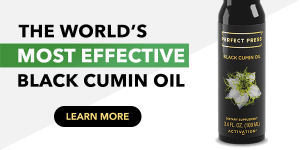
Risks and Safety of Cayenne Pepper
Cayenne pepper, derived from the Capsicum annuum plant, is known for its health benefits and culinary uses. However, like any substance, it carries potential risks and safety concerns, particularly when consumed in large amounts or used improperly. This article explores the potential risks and safety considerations associated with cayenne pepper.
Potential Risks
- Gastrointestinal Issues
Consuming large amounts of cayenne pepper can cause gastrointestinal discomfort, including stomach pain, diarrhea, and nausea. Capsaicin, the active component in cayenne pepper, can irritate the lining of the stomach and intestines, leading to these symptoms. People with pre-existing gastrointestinal conditions, such as irritable bowel syndrome (IBS) or ulcers, should be cautious when consuming cayenne pepper.
- Allergic Reactions
Some individuals may be allergic to cayenne pepper. Symptoms of an allergic reaction can include skin rashes, itching, swelling, and difficulty breathing. If you experience any of these symptoms after consuming or handling cayenne pepper, seek medical attention immediately.
- Interaction with Medications
Cayenne pepper can interact with certain medications, potentially altering their effects. For example, it may enhance the absorption of some drugs, such as theophylline, increasing the risk of side effects. Conversely, it may reduce the effectiveness of others, such as anticoagulants, by promoting blood clotting. If you are taking any medications, consult your healthcare provider before incorporating cayenne pepper into your diet.
- Burns and Skin Irritation
Topical applications of capsaicin-containing creams can cause a burning sensation and skin irritation. While this is usually mild and temporary, it can be uncomfortable. It is important to wash your hands thoroughly after handling cayenne pepper or capsaicin cream to avoid transferring it to sensitive areas, such as the eyes.
Safety Considerations
- Moderation
Moderation is key when consuming cayenne pepper. Small to moderate amounts are generally safe for most people and can provide health benefits without significant risks. Start with a small quantity and gradually increase it to assess your tolerance.
- Proper Handling
When handling cayenne pepper, especially in its powdered form, avoid inhaling it or getting it in your eyes. If you do come into contact with your eyes, rinse them thoroughly with water and seek medical attention if irritation persists. Wearing gloves can help prevent skin irritation when handling fresh or dried cayenne peppers.
- Consulting Healthcare Providers
If you have any pre-existing medical conditions, such as gastrointestinal disorders, or are taking medications, consult your healthcare provider before adding cayenne pepper to your diet. This is especially important for individuals with conditions that could be exacerbated by the spice, such as GERD or chronic ulcers.
- Quality and Source
Ensure you are using high-quality cayenne pepper from a reputable source. Contaminated or adulterated spices can pose additional health risks. Look for organic options that are free from pesticides and other harmful chemicals.
Cayenne pepper offers numerous health benefits but also carries potential risks, particularly when consumed in large quantities or used improperly. Understanding these risks and following safety guidelines can help you enjoy the benefits of cayenne pepper while minimizing any adverse effects. As with any dietary or medicinal supplement, moderation and proper handling are essential.
Key Therapeutic Uses of Cayenne Pepper
Cayenne pepper, derived from Capsicum annuum, is celebrated for its vibrant flavor and numerous health benefits. Its therapeutic properties are primarily attributed to the active compound capsaicin, along with other bioactive compounds such as flavonoids, saponins, and alkaloids. This article highlights seven therapeutic uses of cayenne pepper, supported by scientific research.
1. Pain Relief
Mechanism
Capsaicin, the primary active component in cayenne pepper, is known for its ability to alleviate pain. It works by depleting substance P, a neurotransmitter responsible for transmitting pain signals to the brain.
Applications
- Topical Creams: Capsaicin creams are used to relieve pain from conditions like arthritis, neuropathy, and muscle strains. Regular application can significantly reduce chronic pain.
- Oral Consumption: Including cayenne pepper in the diet can help reduce pain from headaches and migraines by improving blood circulation and reducing inflammation.
2. Digestive Health
Mechanism
Cayenne pepper stimulates the production of digestive enzymes and gastric juices, enhancing overall digestive function.
Applications
- Improved Digestion: It helps break down food more efficiently, alleviating symptoms of indigestion and bloating.
- Detoxification: Cayenne pepper supports detoxification by stimulating the movement of waste through the digestive tract and preventing constipation.
3. Cardiovascular Health
Mechanism
Cayenne pepper has a beneficial effect on the cardiovascular system by improving blood flow, reducing cholesterol levels, and preventing blood clots.
Applications
- Blood Pressure Regulation: Capsaicin helps relax blood vessels, reducing blood pressure and lowering the risk of hypertension.
- Cholesterol Management: It aids in lowering LDL (bad) cholesterol levels while increasing HDL (good) cholesterol, promoting overall heart health.
4. Weight Loss
Mechanism
Capsaicin boosts metabolism by increasing thermogenesis (heat production), which helps the body burn more calories.
Applications
- Appetite Suppression: Cayenne pepper can reduce appetite and increase feelings of fullness, aiding in weight management.
- Fat Oxidation: It promotes the oxidation of fat, enhancing the body’s ability to use fat as a source of energy.
5. Anti-Inflammatory Effects
Mechanism
Cayenne pepper contains compounds like capsaicin and flavonoids, which exhibit strong anti-inflammatory properties.
Applications
- Chronic Inflammation: Regular consumption of cayenne pepper can help reduce chronic inflammation, benefiting conditions such as rheumatoid arthritis and inflammatory bowel disease.
- Acute Inflammation: Topical applications can alleviate inflammation from injuries, sprains, and muscle strains.
6. Immune Support
Mechanism
Cayenne pepper boosts the immune system by enhancing the production of white blood cells and improving overall immune response.
Applications
- Cold and Flu: Its antimicrobial properties help combat infections, making it effective in treating colds and flu.
- Antioxidant Defense: Cayenne pepper’s high antioxidant content protects immune cells from oxidative stress, enhancing immune function.
7. Improved Circulation
Mechanism
Cayenne pepper promotes blood flow by dilating blood vessels and reducing the formation of blood clots.
Applications
- Circulatory Health: It helps prevent conditions related to poor circulation, such as varicose veins and deep vein thrombosis (DVT).
- Diabetic Neuropathy: Improved circulation can alleviate symptoms of diabetic neuropathy, including pain and numbness in the extremities.
Cayenne pepper offers a wide range of therapeutic benefits, from pain relief and improved digestion to cardiovascular health and immune support. Incorporating cayenne pepper into your diet or using it in topical applications can enhance overall health and well-being. However, it is important to use cayenne pepper in moderation and consult with a healthcare provider, especially if you have any pre-existing medical conditions.
After Thoughts
Cayenne pepper is more than just a spice; it is a powerful natural remedy with a wide range of health benefits. From pain relief and cardiovascular health to metabolism boosting and cancer prevention, the bioactive compounds in cayenne pepper, particularly capsaicin, play a crucial role in promoting overall well-being. Incorporating cayenne pepper into your diet, either through cooking or supplements, can be a simple and effective way to enhance your health.
Start incorporating Black Cumin Oil from Activation Products into your diet today to help start enjoying its detoxing health benefits and experience a revitalized Optimal Health.
For natural and healing remedies, products, and supplements to help you live your most optimal healthy life, visit our store here!
Remember: Own Your Health!
I am being HEAVILY censored on Facebook, Google, and even X (formerly Twitter). Please help me spread this life saving information.
If you enjoyed the information presented in this article, Please Share It. Help us reach more people and keep this website going! Thank you in advance!
Note: The information provided in this article is for educational purposes only and should not be considered medical advice. Please consult with a healthcare professional or registered dietitian before making any significant changes to your diet or lifestyle.
Cayenne Pepper FAQ
- What is cayenne pepper?
Cayenne pepper is a type of chili pepper (Capsicum annuum) commonly used in cooking to add heat and flavor. It is also known for its numerous health benefits, attributed primarily to its active compound, capsaicin.
- What are the health benefits of cayenne pepper?
Cayenne pepper offers various health benefits, including:
- Pain relief
- Improved digestion
- Enhanced cardiovascular health
- Weight loss support
- Anti-inflammatory effects
- Immune system support
- Improved blood circulation
- How does cayenne pepper help with pain relief?
Cayenne pepper contains capsaicin, which depletes substance P, a neurotransmitter involved in transmitting pain signals to the brain. This makes it effective in reducing pain when used topically or consumed.
- Can cayenne pepper aid in weight loss?
Yes, cayenne pepper can boost metabolism by increasing thermogenesis, which helps the body burn more calories. It can also suppress appetite, aiding in weight management.
- Is cayenne pepper safe to consume?
Cayenne pepper is generally safe for most people when consumed in moderate amounts. However, excessive consumption can cause gastrointestinal discomfort, and it may interact with certain medications. People with pre-existing conditions should consult a healthcare provider before adding it to their diet.
- Can cayenne pepper improve digestion?
Yes, cayenne pepper stimulates the production of digestive enzymes and gastric juices, enhancing overall digestive function and alleviating symptoms of indigestion and bloating.
- What are the potential side effects of cayenne pepper?
Potential side effects of cayenne pepper include gastrointestinal issues (such as stomach pain and diarrhea), allergic reactions, skin irritation, and interactions with medications. It should be used in moderation to avoid these side effects.
- How can I use cayenne pepper for medicinal purposes?
Cayenne pepper can be used in various ways for medicinal purposes:
- Topical application: Capsaicin creams can be applied to relieve pain from arthritis, neuropathy, and muscle strains.
- Oral consumption: Adding cayenne pepper to your diet can help with pain relief, digestion, and cardiovascular health.
- Supplements: Cayenne pepper supplements are available in capsule form for those who prefer not to consume it directly.
- Are there any drug interactions with cayenne pepper?
Cayenne pepper can interact with certain medications, such as blood thinners, anticoagulants, and drugs that affect blood pressure. It can enhance the absorption of some medications, increasing the risk of side effects. Always consult a healthcare provider if you are taking any medications.
- Can cayenne pepper be used topically?
Yes, cayenne pepper can be used topically in the form of capsaicin creams. These creams are effective for relieving pain from arthritis, neuropathy, and muscle strains by depleting substance P in the affected area.
- How should cayenne pepper be stored?
Cayenne pepper should be stored in an airtight container in a cool, dark place to maintain its potency and flavor. Fresh cayenne peppers should be refrigerated and used within a week for best results.
- Can cayenne pepper help with cardiovascular health?
Yes, cayenne pepper can improve cardiovascular health by reducing blood pressure, lowering cholesterol levels, and preventing blood clots. Its vasodilatory effects help enhance blood flow and overall heart health.
- Is cayenne pepper effective against colds and flu?
Cayenne pepper has antimicrobial properties that can help combat infections, making it useful in treating colds and flu. Its immune-boosting effects and ability to clear nasal congestion can provide relief from these common ailments.Top of Form
References
- Baron, J. H. (2000). Capsaicin and pain relief. The Lancet, 356(9232), 1233-1235.
- Jones, V. M., Moore, K. A., & Peterson, D. M. (2011). Capsaicin: a therapeutic agent in pain management. Pain Medicine, 12(5), 901-910.
- Ahuja, K. D. K., Robertson, I. K., Ball, M. J. (2006). Effects of chili consumption on postprandial glucose, insulin, and energy metabolism. American Journal of Clinical Nutrition, 84(1), 63-69.
- Yoshioka, M., St-Pierre, S., Suzuki, M., & Tremblay, A. (1995). Effects of red pepper added to high-fat and high-carbohydrate meals on energy metabolism and substrate utilization in Japanese women. British Journal of Nutrition, 74(3), 315-328.
- Ludy, M. J., Mattes, R. D. (2011). The effects of hedonically acceptable red pepper doses on thermogenesis and appetite. Physiology & Behavior, 102(3-4), 251-258.
- Westerterp-Plantenga, M. S., Smeets, A., Lejeune, M. P. (2005). Sensory and gastrointestinal satiety effects of capsaicin on food intake. International Journal of Obesity, 29(6), 682-688.
- Satyanarayana, M. N. (2006). Capsaicin and gastric ulcers. Critical Reviews in Food Science and Nutrition, 46(4), 275-328.
- Sharma, S. K., Vij, A. S., Sharma, M. (2013). Mechanisms and clinical uses of capsaicin. European Journal of Pharmacology, 720(1-3), 55-62.
- Surh, Y. J. (2002). Anti-tumor promoting potential of selected spice ingredients with antioxidative and anti-inflammatory activities: a short review. Food and Chemical Toxicology, 40(8), 1091-1097.
- Srinivasan, K. (2016). Biological activities of red pepper (Capsicum annuum) and its pungent principle capsaicin: a review. Critical Reviews in Food Science and Nutrition, 56(9), 1488-1500.
- Wintergerst, E. S., Maggini, S., Hornig, D. H. (2006). Contribution of selected vitamins and trace elements to immune function. Annals of Nutrition and Metabolism, 50(2), 85-94.
- Hemilä, H. (2003). Vitamin C and SARS coronavirus. Journal of Antimicrobial Chemotherapy, 52(6), 1049-1050.
- Carotenuto, A., Rescigno, T., Corvino, R., et al. (2014). Capsaicin nasal spray in non-allergic rhinitis with idiopathic rhinitis and idiopathic rhinitis-like symptoms: a prospective, multicenter, randomized, placebo-controlled trial. Clinical Therapeutics, 36(8), 1189-1199.
- Satia, J. A., Galanko, J. A., & Potter, J. D. (2005). The association of dietary capsaicin and other spicy foods with cancer incidence in a large, prospective cohort study. Cancer Causes & Control, 16(3), 293-301.
- Bridges, S. R. (2002). The role of capsaicin in the management of patients with hyperhidrosis. Journal of Cutaneous Medicine and Surgery, 6(3), 217-221.
- Duggan, A. T., & Keeling, C. P. (2001). The effect of capsaicin on lymphatic transport in the rat. European Journal of Pharmacology, 428(1), 57-63.
- Mori, A., Lehmann, S., O’Kelly, J., et al. (2006). Capsaicin, a component of red peppers, inhibits the growth of androgen-independent, p53 mutant prostate cancer cells. Cancer Research, 66(6), 3222-3229.
- López-Carrillo, L., Hernández Avila, M., Dubrow, R. (1994). Chili pepper consumption and gastric cancer in Mexico: a case-control study. American Journal of Epidemiology, 139(3), 263-271.
- Eshbaugh, W. H. (1976). Genetic and biochemical systematic studies of chili peppers (Capsicum—Solanaceae). Bulletin of the Torrey Botanical Club, 102(1), 48-54.
- Perry, L., Dickau, R., Zarrillo, S., et al. (2007). Starch fossils and the domestication and dispersal of chili peppers (Capsicum spp. L.) in the Americas. Science, 315(5814), 986-988.
- Andrews, J. (1992). The Pepper Trail: History and Recipes from Around the World. University of North Texas Press.
- Collingham, L. (2006). Curry: A Tale of Cooks and Conquerors. Oxford University Press.
- Basu, T. K., & De Boer, G. (2003). Handbook of Medicinal Spices. CRC Press.
- Kapoor, L. D. (1990). Handbook of Ayurvedic Medicinal Plants: Herbal Reference Library. CRC Press.
- Duke, J. A. (2002). Handbook of Medicinal Herbs. CRC Press.
- Guarneri, E., Bourguignon, C., & Shojaii, R. (2010). Herbal and Dietary Supplements: When are they Safe and Effective? The Journal of Family Practice, 59(9), 490-500.
- Borrelli, F., Capasso, R., & Izzo, A. A. (2006). Potential therapeutic effects of Capsaicin and its analogs in chronic pain conditions. The Open Pain Journal, 1, 19-30.
- Srivastava, K. C., Bordia, A., & Verma, S. K. (1995). Garlic (Allium sativum) for disease prevention. South African Journal of Science, 91(2), 68-77.
- Tandon, V. R. (2005). Medicinal uses and biological activities of Vitex negundo. Natural Product Radiance, 4(3), 162-165.
- Fattori, V., Hohmann, M. S., Rossaneis, A. C., Pinho-Ribeiro, F. A., & Verri, W. A. (2016). Capsaicin: Current Understanding of Its Mechanisms and Therapy of Pain and Other Pre-Clinical and Clinical Uses. Molecules, 21(7), 844.
- Kim, C. S., Kawada, T., , B. S., et al. (2004). Capsaicin exhibits anti-inflammatory property by inhibiting IkB-a degradation in LPS-stimulated peritoneal macrophages. Cellular Signalling, 15(4), 299-306.
- Reuter, J., Merfort, I., & Schempp, C. M. (2010). Botanicals in dermatology: an evidence-based review. American Journal of Clinical Dermatology, 11(4), 247-267.
- Ludy, M. J., & Mattes, R. D. (2011). The effects of hedonically acceptable red pepper doses on thermogenesis and appetite. Physiology & Behavior, 102(3-4), 251-258.
- Oakenfull, D. G., & Sidhu, G. S. (1990). Saponins. In Food Additives (pp. 187-203). Springer.
- Sparg, S. G., Light, M. E., & van Staden, J. (2004). Biological activities and distribution of plant saponins. Journal of Ethnopharmacology, 94(2-3), 219-243.
- Man, S., Gao, W., Zhang, Y., & Huang, L. (2010). Saponins: The role in antitumour activity. Current Drug Targets, 11(7), 830-841.
- Purves, D., Augustine, G. J., & Fitzpatrick, D. (2001). Neuroscience. 2nd edition. Sinauer Associates.
- Ríos, J. L., & Recio, M. C. (2005). Medicinal plants and antimicrobial activity. Journal of Ethnopharmacology, 100(1-2), 80-84.
- Pietta, P. G. (2000). Flavonoids as antioxidants. Journal of Natural Products, 63(7), 1035-1042.
- Nijveldt, R. J., van Nood, E., van Hoorn, D. E. C., et al. (2001). Flavonoids: a review of probable mechanisms of action and potential applications. American Journal of Clinical Nutrition, 74(4), 418-425.
- Erdman, J. W., Balentine, D., Arab, L., et al. (2007). Flavonoids and heart health. Journal of Nutrition, 137(3), 718-737.
- Chung, K. T., Wong, T. Y., Wei, C. I., et al. (1998). Tannins and human health: a review. Critical Reviews in Food Science and Nutrition, 38(6), 421-464.
- Scalbert, A., & Williamson, G. (2000). Dietary intake and bioavailability of polyphenols. Journal of Nutrition, 130(8S Suppl), 2073S-2085S.
- Kolodziej, H., & Kiderlen, A. F. (2005). Antileishmanial activity and immune modulatory effects of tannins and related compounds. Chemical Biodiversity, 2(5), 609-615.
- Kashiwada, Y., Kim, S. Y., Yamashita, Y., et al. (1998). Triterpene inhibitors of HIV-1 reverse transcriptase. Journal of Natural Products, 61(9), 1090-1095.
- Haridas, V., Arntzen, C. J., & Gutterman, J. U. (2001). Avicins: a family of triterpenoid saponins from Acacia victoriae (Bentham) induce apoptosis, inhibit activation
Featured Image:Image by jcomp on Freepik;

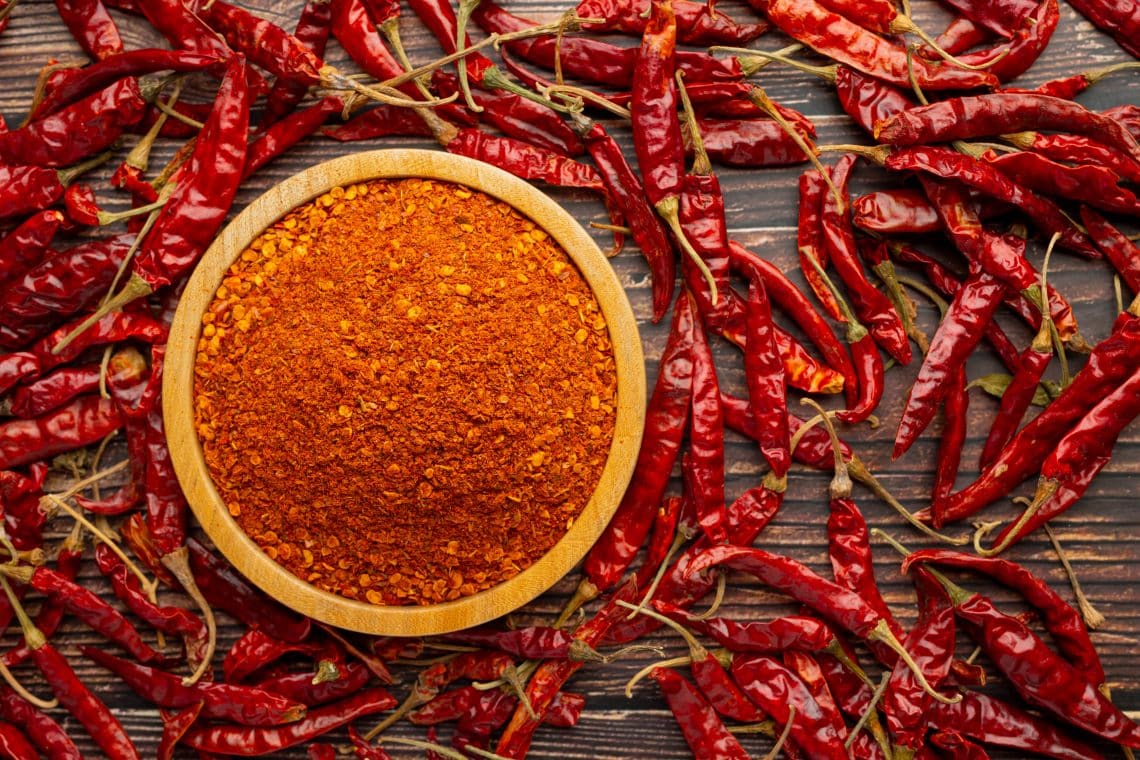








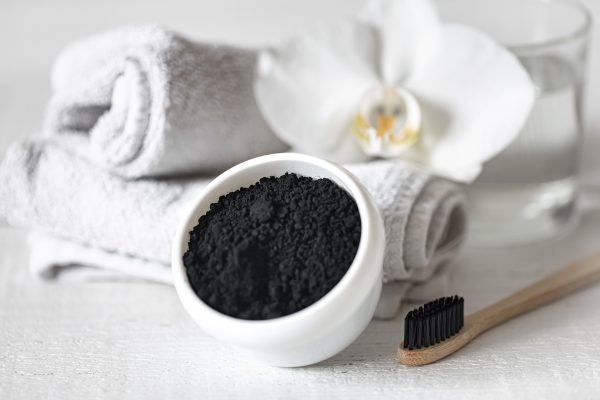




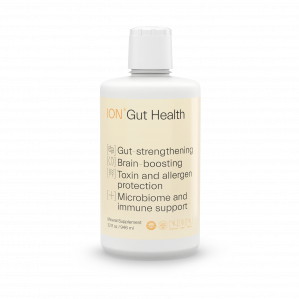

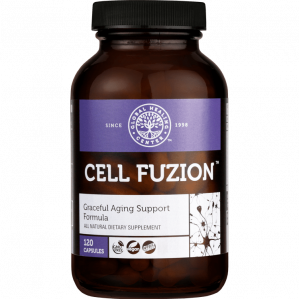



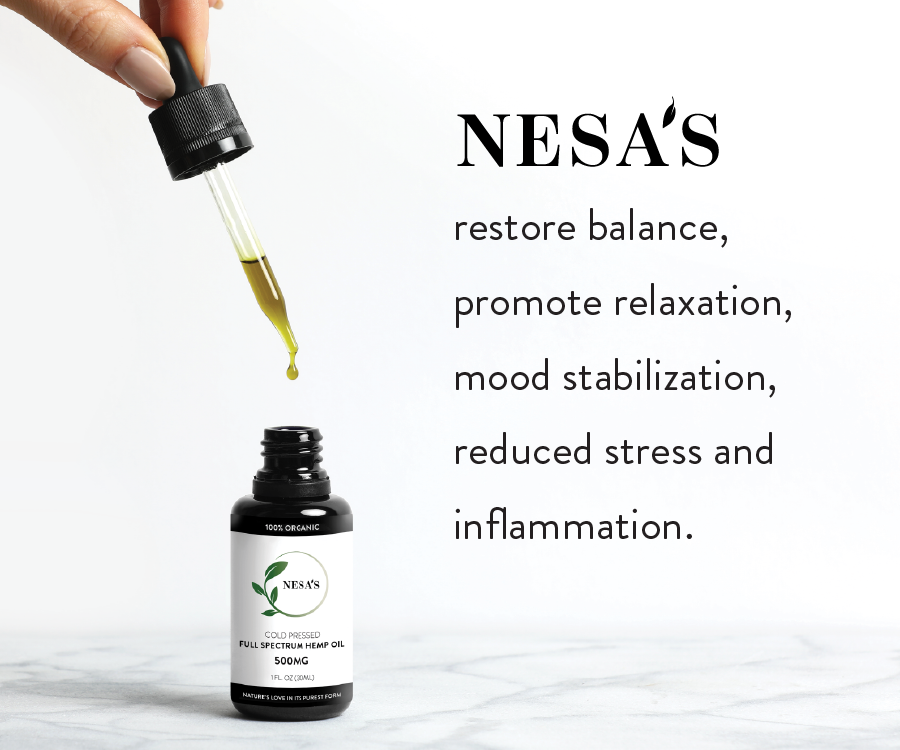







0 Comment